Written by Tracy Dion, November 2009, and updated February 2013.
(Note: A condensed version of this information is available here A Prey Model Raw (PMR) Feeding Primer.)
If you’re reading this, you’ve probably already done some research and realize how important a species-appropriate diet is for your cat; I won’t have to bore you with the kibble-is-bad lecture and can move right into giving you the scoop on what is good for your furry little friends. 🙂
Which is to say, a raw, prey-based or -modeled diet. Cats are obligate carnivores and, in the wild, live on rodents, birds, reptiles and insects. A prey-based diet seeks to mimic that menu by providing either whole prey animals or enough meats, organs, bones, etc. from different animal sources to recreate the same nutrient balance as would be found in a whole prey animal.
Raw diets can be produced two ways – commercially or at home. This article primarily discusses prey model raw, one of the later methods.
Methodologies
There are three primary methodologies for preparing a raw diet: grinding, prey model and whole prey. The first two are based on a general guideline that has been used by raw dog feeders for decades, modified for cat… the 83 / 07/ 5 / 5 rule – that’s 83% meat, fat, skin, sinew, connective tissue and heart, 7% edible bone, 5% liver, and 5% other secreting organ – while the third is as close to natural as your cat can get without catching dinner on its own. Rodents are roughly 5% bone and 4% liver, rabbits are slightly less than 10% bone and less than 4% liver. Birds have an even lower bone and organ content, so this modification from the original canine guideline (80/10/5/5) is necessary to match the rough average of the feline prey diet percentages.(1)
Grinding is the most well-known and popular method. It is the farthest from a “natural” diet in that the meats, organs, bones, etc. are all ground together, offering little to no chewing challenge to a cat and, due to the nutrient breakdown inherent in the process, requiring supplementation.(2) However, this method most resembles the canned food many cats are already accustomed to eating and is often the easiest raw transition a cat can make. Cats are notoriously picky and some take weeks, months, or even years to recognize whole prey or prey model as food, or accept the work inherent in eating them. Sometimes, they’re brought to raw at an older age and are missing teeth. In these cases, appropriately supplemented ground diets provide the incredible nutritional benefits of eating a species-appropriate diet (if not the dental and psychological benefits) and are a good interim step.
As grinding is the most prevalent raw feeding methodology, there are several detailed how-to articles and recipes already available online (see Feline-Nutrition.org, CatInfo.org and CatNutrition.org for the most well-known and vetted recipes).
Prey model (sometimes also called Frankenprey) is not as widely known, but is slowly becoming more mainstream. In this method, a variety of animal parts are fed in measured amounts so that over a certain period of time (usually a week), the cat gets the same sum of parts as it would have were it eating whole animals. Meals are often all meat or a mix of meat with bone or organ and are fed in large chunks that the cat must actively gnaw on to reduce to bite-size pieces. 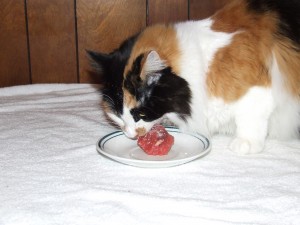
This active engagement in the eating process has several benefits to the cat, including the psychological satisfaction inherent in successfully meeting mental and physical challenges (eating becomes work!). One of its more important benefits, however, is improved dental health. Dental disease is at near-epidemic proportions in the feline population and has far-reaching health consequences for the cat. A diet that includes tearing, ripping and scissoring through meat, tendons and bones provides the necessary stimulation to keep your carnivore’s mouth clean and healthy.(3) (Unfortunately, a raw diet may not undo past damage or remove already built-up plaque or tartar, so your raw-fed cat may still need a cleaning at some point.)
In addition, the very act of scissoring chunks off fresh raw protein sets off a chain reaction that releases a more efficient combination of enzymes in the cat’s digestive system (starting with the enzymes in saliva!) and this, combined with the extended time required to finish a meal, promotes a better digestive process.(11)
Feeding prey model entails less initial preparation than grinding, minimal or no supplementation, and fewer tools, but it requires strict adherence to a feeding schedule to ensure the proper nutrient balance is maintained. (Here is mine.)
Whole prey is the rarest raw feeding method. It is exactly what it sounds like – whole animals such as mice, rats, young chicks, and quail are offered to your cat. It is, obviously, the most natural method, but it is the least acceptable to both cat owners – who sometimes find it emotionally difficult to handle dead animals – and the cats themselves, who often have trouble recognizing the prey as food (accustomed as they are to heavily processed kibble and / or canned products). If both owner and cat can get past these difficulties, whole prey is the easiest, most efficient and most beneficial method of raw feeding.
As in any topic, there are proponents of the various methods who eschew all others as being inferior. Don’t let these well-meaning but sometimes overly-passionate folks intimidate or discourage you – all three feeding methods (and any combination there-of) are healthy, nutritious and far, far better for your cat than even the “best” commercially manufactured foods.
Menu Choices and Product Preparation
Whichever method you choose to use, a variety of animals should be part of the menu. This will keep the cats from losing interest in particular foods, but, more importantly, it maintains a better nutritional balance. Nutrient profiles differ between prey animals and what is low in one may be high in another. Chicken, for instance, is high in fat, while rabbit is very lean(4); quail is high in copper and chicken breast is high in niacin(5). Offering a variety of animals provides the greatest assurance of a balanced diet and mimics the hunting behavior of cats in the wild.(6)
Turkey, chicken, Cornish hen, beef, lamb and pork are often basic ingredients and can be readily found in local stores. Venison, bison, pheasant, quail, rabbit, duck and goat can sometimes be found locally, but can also often be ordered online. Liver, kidney and other organs can be sourced from any animal and do not need to “match” the meat products; it’s fine to feed beef chunks, chicken liver and lamb heart in a single meal.
Organic products are just as much healthier for your cat as they are for you, but feeding organic is not a critical component of a raw-fed regimen. Organic or not, however, care must be taken that any product destined for your cat’s plate is not “enhanced” with extra sodium or flavorful marinades. The sodium content should not exceed “80mg per serving” as written on the package.
 Prey model and whole prey feeding methodologies do not require a great deal of preparation. Boneless products (beef, pork, heart, organs, etc.) need to be cut down to whatever size your cat is comfortable with, then weighed into meal-sized portions and packed in labeled freezer bags or freezer-safe plastic containers. Organs don’t generally make up a whole meal, so add as much meat necessary to reach the desired portion size.
Prey model and whole prey feeding methodologies do not require a great deal of preparation. Boneless products (beef, pork, heart, organs, etc.) need to be cut down to whatever size your cat is comfortable with, then weighed into meal-sized portions and packed in labeled freezer bags or freezer-safe plastic containers. Organs don’t generally make up a whole meal, so add as much meat necessary to reach the desired portion size.
Pork, kidney, and sometimes heart have thick clumps of fat; it’s not necessary to remove every single bit of this fat, but removing most of it is generally a good idea for weight maintenance and to ensure the cat is getting the intended amount of product.
Bone-in meats with small edible bones – Cornish hen, quail and chicken ribs, wings, necks and backs, for instance – can be cut into single cat portions using kitchen shears and then packed for the freezer. Meats with weight-bearing bones such as turkey drumsticks and chicken leg quarters can either be packed for the freezer as they are and the meat cut off the bones at serving time, or de-boned, weighed and packed for the freezer in single cat portions, depending on your needs.
Because weight-bearing bones are difficult for cats to break, many cat owners do not feed them. However, whacking a large bone with a hammer is a perfectly acceptable way to reduce it to more manageable pieces. Always feed bones with meat on them, as this will encourage the cat’s interest and, more importantly, make it easier and safer for the cat to digest.
Never feed cooked bone, as it can splinter and cause serious complications.
Whole prey products are often purchased already frozen, so your prep work will likely be limited to separating the animals into meal-size portions and re-packing them for the freezer. In the wild, felines don’t normally eat the stomach contents of their prey unless they’re starving, and since our domesticated cats don’t often find themselves that hungry, you may need to gut the prey before offering it to your cat. In addition, some cats find the urge to play with prey animals irresistible – in these cases, using kitchen shears to reduce the prey-animal into smaller pieces may make such play less tempting.
Due to a variety of factors, including toxins and histamines, fish shouldn’t make up more than a very small percentage of your cat’s diet.(7) Feed only wild-caught varieties, not farm-raised, to avoid antibiotics, and make sure they are packed in water with no added salt. Sardines, invariably wild-caught (often in a sustainable manner), are among the safest to feed. They grow to adult size quickly, live only six or seven years, and eat mostly plants, all of which limits their exposure to PCBs, mercury and other heavy metals and toxins. They are full of Omega 3 fatty acids, making them a valuable – if minimal – contribution to your cat’s diet (one a week is great!).
Insects can be a fun addition to a cat’s menu, too. Just throw a few crickets in the tub once or twice a month and watch your kitty go into hunting mode.
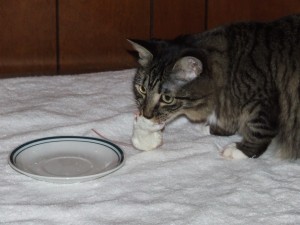
One issue that crops up with prey model and whole prey diets that is seldom, if ever, seen with ground is the runaway diner. The larger the piece of food you offer and the more it resembles whole prey, the more likely it seems the cat is to run off with it. The most effective method to reduce or eliminate this behavior is to separate cats by levels and distance. Buy a small table and feed one cat on the table and one on the floor and/or feed cats on opposite sides of the room; this helps the cats relax and allows them to feel less threatened. If necessary, and your cats tolerate the confinement, you can crate them separately for meals.
Always defrost your cat’s food in the fridge, not on the counter. Bacteria grow faster at room temperatures than they do in the fridge and while your cat is far less likely to become ill from this than you are, it’s good practice not to do it. Whether you serve food straight from the fridge or slightly warmed depends on your cat’s preferences. If necessary, you can take the chill off your cat’s dinner by sealing it in a bag and placing it in warm water for a few minutes. Don’t put the food directly into the water, as this leaches nutrients out, and make sure the water is only warm, not hot, as hot water will cook the outside of the meat and degrade the nutrient content.(8) Microwaving is not recommended for the same reason – the instant you turn it on, it begins cooking the food and destroying nutrients.
With the single exception of Omega-3 fats, supplements are not generally necessary in prey model and whole prey diets. Beef and poultry used to be raised on grasses and other greens, leading to higher levels of Omega-3s in their tissues, however, today’s animals are often corn and soy fed, creating a higher Omega-6, lower Omega-3 balance. If not compensated for, this can lead to an imbalance in a raw-fed cat’s diet. Feeding grass-fed meat sources whenever you can will help prevent this, as will offering Sardines once a week. The heads of prey animals are also good to feed, as brains and eyes are both high in Omega-3s.
Alternatively, you can purchase wild-caught Salmon Oil or Small Fish Oil and drizzle 1000mg or so over the cat’s food two or three times a week. Buy capsules rather than liquid products, as the oil tends to break down fairly quickly once the container is opened. Stay away from cod liver oil – it can be high in Vitamin A and in conjunction with the liver already being offered, could push those levels too high – and non-animal-sourced oils such as flax and grape seed.
Some things to think about as you’re creating your cat’s weekly menu:
– The harder a muscle works, the higher its taurine content. For example, chicken thighs have more taurine than chicken breasts, and heart, of course, has the highest taurine content. Feeding heart a couple of time a week is a great way to ensure your cat is getting all the taurine it needs. And taurine is water soluble, so there’s no worry about over-feeding it.
– Skin is quite fatty, so watch your cat’s weight and cut back if necessary (chicken skin is especially high in fat).
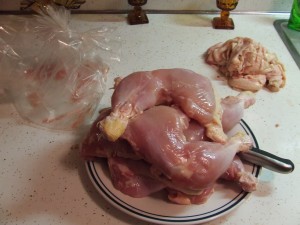
– Gizzards are tough to chew, which makes them great for exercising your cat’s jaws or slowing down a fast eater.
– Rabbit is generally a very lean protein source. Cats require more fat in their diet than we do (20% – 35%), so, while rabbit is great as a part of the diet, it shouldn’t be the sole protein source.
– Beef, pork, lamb, bison, and venison are completely acceptable meat ingredients, but some cats may be reluctant to eat them. Most raw feeders happily feed these products, but a few balk at doing so, saying such prey is “unnatural”. Contradicting this, however, are historical accounts describing the African black-footed cat killing and eating sheep and goats.(9) This cat is a genetic ancestor to our own, so these accounts should put to rest any doubts about feeding products from hoofed animals.(10)
– Whole eggs are fine as occasional additions, but be aware that too much at one time may cause loose stools.
Part 2: Putting It Into Action
How Much to Feed
To determine how many ounces of raw food to feed, multiply your cat’s weight by 16 to convert it to ounces and then multiply that by 2%, 3% or 4%. Divide that total by however many meals you offer each day to get the ounces to feed per meal (until they are about a year old, kittens can generally be offered twice this amount). Feeding three times a day (four for kittens) is a better option than feeding twice a day, as the cat’s stomach may become too acidic if it goes hungry for too long, causing digestive upsets and possible vomiting.
Your starting percentage depends on your cat’s current weight and activity level; the leaner the cat and the higher the activity level, the higher the percentage you start with. If you’re not sure what percentage is best, start with 3% and adjust as needed. You should be able to feel your cat’s ribs, but not actually see them. If you can’t feel them, slowly reduce how much you feed; if you can see them, slowly increase how much you feed.
For example, an overweight, inactive 15.5 pound cat would be fed about 4.96 ounces of food a day (15.5 x 16 = 248; 248 x 2% = 4.96) , while a lean, active 10 pound cat would be offered about 6.4 ounces (10 x 16 = 160; 160 x 4% = 6.4).
Once you know how much raw to offer your cat each day, your next step is to determine how much of what part to feed. You can do this using daily numbers, but it’s easier to calculate by the week, so take that daily total from above and multiply it by 7 to get a weekly total. (Continuing the previous example of the overweight cat: 4.96 x 7 = 34.72 ounces of food per week.) Now multiply that weekly total by:
83% = ounces of meat to feed each week
7% = ounces of bone to feed each week
5% = ounces of liver to feed each week
5% = ounces of non-liver organ to feed each week
Still using the 15.5 pound kitty example, as well as the more generally recommended %’s (as shown here), we get the following:

83% = 27.78 ounces of meat to feed each week (34.72 x .83 = 28.82)
7% = 3.47 ounces of bone to feed each week (34.72 x .07 = 2.43)
5% = 1.74 ounces of liver to feed each week (34.72 x .05 = 1.74)
5% = 1.74 ounces of non-liver organ to feed each week (34.72 x .05 = 1.74)
This is the part that often discourages new raw feeders before they’ve even begun, but these calculations need only be done once, and a very helpful calculator can be found here. Once the diet is established, you can easily tweak the numbers if and as needed.
Note that for raw-feeding purposes, meat, fat, skin, sinew, connective tissue, hearts, lung and gizzards are all considered muscle meat. They count toward the muscle meat percentage, not the organ requirement. Liver has its own requirement and the remaining non-liver organ percentage can consist of kidney, spleen, testicles, brain, eyes, pancreas – any secreting organ in the body. As mentioned earlier, the more variety you offer, the better the nutritional profile you are offering your cat.
Determining how to fit the appropriate amount of bone into your cat’s diet can take a bit of work, but a review of the USDA’s chart (5) will give you the bone-to-meat ratio of many of the most commonly fed raw products and can be used to calculate your needs. Chicken wings, for instance, are 46% bone and 52% everything else. Our tubby kitty needs 3.47 ounces of bone per week, so he would need to eat a total of 7.5 ounces of chicken wings every week (3.47 / .46 = 7.54 rounded up to 7.5oz), which breaks down to 2.5 ounces of chicken wings three times a week (7.5oz / 3meals = 2.5oz per meal).
Among other things, bone is necessary to keep a cat’s digestive system regulated, so you want to feed it fairly often; a minimum of three feedings a week is good. If you feed it less often, you may end up with a cat whose stools that are alternately too hard – which can cause discomfort or even constipation – or too soft – which can be uncomfortable for both of you. If you’re feeding the 7% weekly requirement in three feedings and your cat’s stool still seems to be too hard, you can cut back to the lower end of the recommendation (down to 5%). Don’t panic if your cat’s stools drop in frequency, however, as a drop in waste quantity is to be expected on a raw diet. Many raw fed cats can go a day or two between stool deposits and some even longer.
The liver percentage is generally given as 5%, but that, too can be lowered, down to 3%. It’s a good idea not to exceed the 5%, though, because liver is a great source of Vitamin A, which can be toxic if overfed. Though the level required to reach toxicity varies by cat, it is generally such a high amount that it’s an unlikely event, but it’s best to exercise caution by not overfeeding liver.
Also, some cats find liver and other organs a bit “rich” and may get diarrhea if they eat too much at a single sitting, so, like bone, it’s a good idea to spread these out over two or more meals per week.
Examples
I know what I wanted most when I first started was examples, so here are three. The prey model version is, for the most part, what my cats are currently eating and the prey model / ground example is basically what they started out eating. As you read these examples, keep in mind the meals are split between six cats.
Breakfast:
– Monday, Wednesday and Friday = 10oz of chicken, duck and turkey heart, respectively.
– Tuesday and Saturday = 10oz of beef round or stew chunks.
– Thursday and Sunday = 10oz of pork loin chunks.
Lunch:
– Monday, Wednesday, and Saturday = bone-in meals: 6 chicken wings (minus the drummettes), ~15oz of chicken ribs w/meat still attached and another ~15oz of small rabbit bones w/meat still attached, respectively.
– Tuesday and Friday = 6oz of liver and 6oz of gizzards.
– Thursday and Sunday = 6oz of kidney and 6oz of chicken breast meat.
Dinner:
– Monday and Thursday = 10oz of rabbit meat.
– Tuesday and Saturday = a turkey drumstick
– Wednesday and Sunday = a chicken leg quarter.
– Friday = 9 boned and mostly skinned chicken wing drummettes.
Every Friday they share a single 3.75oz can of sardines, on Saturday they get either egg yolks or egg whites and on Sunday they share a couple dozen live crickets.
Prey Model & Ground
Breakfast:
– A ground mix of the weekly requirements of bone, liver and organ, with the appropriate supplements and enough additional meat to equal a total of 70oz, divided into seven, 10oz meals and fed each morning.
Lunch:
– About 10oz of gizzards, chicken or beef heart, beef round, or pork loin.
Dinner:
– About 10oz of chicken breast, or a turkey drumstick or chicken leg quarter.
Weekend treats could be the same as on prey model.
Whole Prey, Prey Model & Ground
Breakfast:
– A ground mix of the weekly requirements of bone, liver and organ, with the appropriate supplements and enough additional meat to equal a total of 70oz, divided into seven, 10oz meals and fed each morning.
Lunch:
– Six adult mice, small rats, baby chicks, small quail, etc.
Dinner:
– About 10oz of any of the prey model products from the first two examples.
Weekend treats could be the same, again.
Equipment and Cleaning
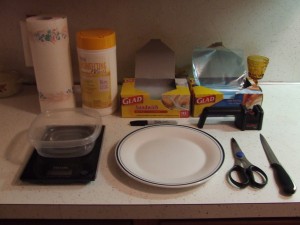 To feed prey model and whole prey, you’ll need a scale that registers down to a quarter of an ounce or less, a good set of kitchen shears, a high-quality medium or large carving knife, a knife sharpener (skin dulls a knife fast!!), cutting board and freezer bags and / or plastic storage containers. You’ll also find a chest freezer is a huge convenience; you can shop, chop, bag and freeze once a month with a freezer large enough.
To feed prey model and whole prey, you’ll need a scale that registers down to a quarter of an ounce or less, a good set of kitchen shears, a high-quality medium or large carving knife, a knife sharpener (skin dulls a knife fast!!), cutting board and freezer bags and / or plastic storage containers. You’ll also find a chest freezer is a huge convenience; you can shop, chop, bag and freeze once a month with a freezer large enough.
You can scrub down your preparation area with disinfecting wipes, then thoroughly rinse and dry it with paper towels, which is easier and more thorough than cleaning with sponges or wash-clothes. Alternatively, you can use peroxide or a mix of vinegar and water to do the same thing. Always rinse thoroughly to prevent cats from picking up any of the disinfecting agents on their feet. If resources permit, using “green” products such as those made by Seventh Generation are a healthier and more ethical option.
Sourcing Products
– Ask about bulk purchasing everywhere you go. Watch for sales and marked-down meats.
– Check your local grocery stores first, you might be surprised at what they carry. Talk to the meat department; if they don’t regularly stock what you want, they may be willing to bring it in once a month or so.
– Join a Costco, BJ’s, Sams Club or other similar club store. Barter groups and coops usually have an annual cost, but everything you get is fresh – a benefit to your pets and your family.
– Ethnic Markets are often good sources for hard-to-find organs and meats.
– Tell your friends and relatives to ask around for hunters and fishers; let them know you’re interested in animal parts they don’t want.
– Talk to restaurants and caterers and ask for organs and other meat pieces they throw out. Also try restaurant suppliers.
– Call your local butcher and ask for the meats and organs they would normally throw out, including items that are nearing expiration.
– Online vendors are often pricey, but they can usually provide both pre-ground and whole prey products. If you purchase pre-ground products, make sure you know what, if any, supplements they add.
For the non-squeamish only…
– Local animal breeders and farmers. You may have to do so some of the cutting-up yourself, so be prepared.
– Slaughterhouses, meat and poultry packers and distributors. Ask for organ meats that normally get tossed. Also ask what else they throw away.
– Livestock auctions (the animals can be butchered for you).
Where NOT to get your foods…
– Craigslist and other ad venues are often suggested as good places to seek out hunting and fishing remains, old and/or freezer-burnt meats, etc., however, there are many unknowns in procuring products this way and, while you may save substantially on money, you are likely offering foods with a lower nutritional profile than you think. Many nutrients degrade over time in the freezer and some are even affected by light and / or air. Defrosting and refreezing exacerbates this process, so feeding products obtained this way can be risky.(4)
– Road-kill not a good idea either, as the prior health state and current level of spoilage of the dead animals are unknown.
In Conclusion
There is a steep learning curve to home-preparing your cat’s raw-food menu, but you’ll be surprised after just a short time how easy it becomes. Your pet-related food and litter costs will drop and some otherwise-costly visits to the vet will almost assuredly be avoided. Your cats will be healthier, happier, and will live longer – a wonderful return on investment and well worth the effort involved.
References
1. Christine M. Ruessheim, “Tissue Percentage of Some Common Prey of the Cat”, Baton Rouge, June 2002
2. Roman J. Kutsky, “Handbook of Vitamins, Minerals, and Hormones”, Van Nostrand Reinhold Company, May 1981; Susan D. Crissey, et. al., “Handling Frozen/Thawed Meat and Prey Items Fed to Captive Exotic Animals”, Unites States Agricultural Department, May 2001, pp. 12
3. David A. Fagan, D.D.S., et. al., “Influence of Diet Consistency on Periondontal Disease in Captive Carnivores”, Zoological Society of San Diego, Dept. of Veterinarian Services,
4. Ellen S. Dierenfeld, PhD, et. al., “Nutrient Composition of Whole Vertebrate Prey (Excluding Fish) Fed in Zoos”, Unites States Agricultural Department, May 2002, pp 9 & 10.
5. U.S. Department of Agriculture, “USDA National Nutrient Database for Standard Reference”, Agricultural Research Service, 2010, Release 23
6. John W. S. Bradshaw, “The Evolutionary Basis for the Feeding Behavior of Domestic Dogs and Cats”, The Journal of Nutrition, September 2005
7. Anne Jablonski, “Eight Strikes Against Fishy Feeding”, catnutrition.org, September 2007; Dr. Jean Hofve “Why Fish is Dangerous for Cats“, November 2010
8. A.R. Spitze, et. al., “Taurine Concentrations in Animal Feed Ingredients; Cooking Influences Taurine Content”, Department of Molecular Biosciences, School of Veterinary Medicine, University of California, January 2003; Mary A. Hickman, et. al., “Effect of Processing on Fate of Dietary Taurine in Cats“, Department of Physiological Sciences, School of Veterinary Medicine, University of California, Davis, CA 95616, February 1990.
9. Melvin E. Sunquist, et. al, “Wild Cats of the World”, University of Chicago Press, 2002.
10. Warren E. Johnson, et al., “The Late Miocene Radiation of Modern Felidae: A Genetic Assessment”, Science 311, 2006.
11. National Research Council of the National Academies, “Nutrient Requirements of Dogs and Cats”, The National Academies Press, 2006, Chapter 1.
If you enjoyed this article or found it informative, please “Like” it, “Tweet” it, or share it using any of the buttons below. And don’t forget to check out our FB page, join the discussions in our awesome FB group and follow us on Twitter!
Created 09/19/11; Updated 08/11/14

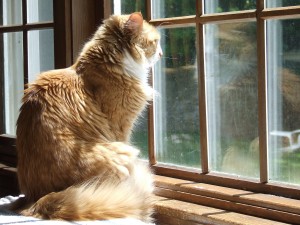

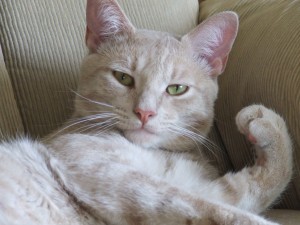

Pingback: Feeding Cats A Raw Diet? Yes? No? How? - Pet Food Chat
Pingback: Feeding Cats A Raw Diet? Yes? No? How? – Kitty Catter